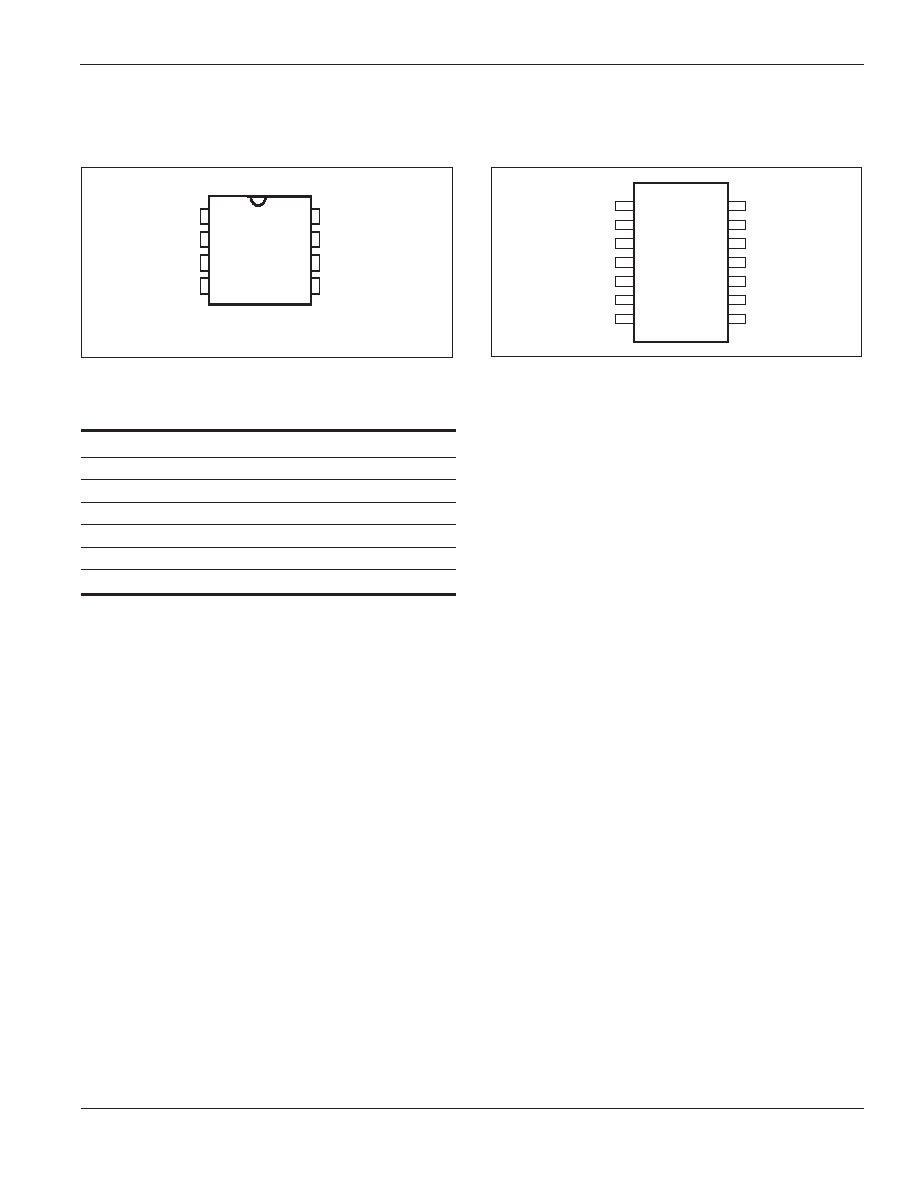
Integrated Silicon Solution, Inc. -- www.issi.com --
1-800-379-4774
1
ADVANCED INFORMATION
Rev. 00D
03/11/05
IS24C256
ISSI
Æ
Copyright © 2004 Integrated Silicon Solution, Inc. All rights reserved. ISSI reserves the right to make changes to this specification and its products at any time without notice. ISSI
assumes no liability arising out of the application or use of any information, products or services described herein. Customers are advised to obtain the latest version of this device
specification before relying on any published information and before placing orders for products.
256K-bit
2-WIRE SERIAL CMOS EEPROM
ADVANCED INFORMATION
MARCH 2005
DESCRIPTION
The IS24C256 is an electrically erasable PROM device
that uses the standard 2-wire interface for
communications. The IS24C256 contains a memory
array of 256K-bits (32,768 x 8), and is further
subdivided into 512 pages of 64 bytes each for Page-
Write mode. This EEPROM is offered in wide operating
voltages of 1.8V to 5.5V (IS24C256-2) and 2.5V to 5.5V
(IS24C256-3) to be compatible with most application
voltages. ISSI designed the IS24C256 to be a low-cost
and low-power 2-wire EEPROM solution. The devices
are packaged in 8-pin PDIP, 8-pin SOIC, and 14-pin
TSSOP.
The IS24C256 maintains compatibility with the popular
2-wire bus protocol, so it is easy to design into
applications implementing this bus type. The simple
bus consists of the Serial Clock wire (SCL) and the
Serial Data wire (SDA). Using the bus, a Master device
such as a microcontroller is usually connected to one
or more Slave devices such as the IS24C256. The bit
stream over the SDA line includes a series of bytes,
which identifies a particular Slave device, an
instruction, an address within that Slave device, and a
series of data, if appropriate. The IS24C256 has a Write
Protect pin (WP) to allow blocking of any write
instruction transmitted over the bus.
FEATURES
∑ Two-Wire Serial Interface, I
2
C
TM
compatible
≠Bi-directional data transfer protocol
∑ 400 KHz (2.5V) and 1 MHz (5.0V) compatibility
∑ Low Power CMOS Technology
≠Active Current less than 3 mA (5.0V)
≠Stanby Current less than 6 µA (5.0V)
≠Standby Current less than 2 µA (2.5V)
∑ Wide Voltage Operation
≠Vcc = 1.8V to 5.5V for -2 version
≠Vcc = 2.5V to 5.5V for -3 version
∑ Hardware Data Protection
≠Write Protect Pin
∑ Sequential Read Feature
∑ Filtered Inputs for Noise Suppression
∑ Self time write cycle with auto clear
≠5 ms @ 2.5V
∑ Organization:
≠32Kx8 (512 pages of 64 bytes)
∑ 64 Byte Page Write Buffer
∑ High Reliability
≠Endurance: 100,000 Cycles
≠Data Retention: 40 Years
∑ Industrial and Automotive temperature ranges
∑ 8-pin PDIP, 8-pin SOIC, and 14-pin TSSOP
packages
∑ Lead-free available

2
Integrated Silicon Solution, Inc. -- www.issi.com --
1-800-379-4774
ADVANCED INFORMATION
Rev. 00D
03/11/05
IS24C256
ISSI
Æ
FUNCTIONAL BLOCK DIAGRAM
>
CONTROL
LOGIC
X
DECODER
SLAVE ADDRESS
REGISTER &
COMPARATOR
WORD ADDRESS
COUNTER
HIGH VOLTAGE
GENERATOR,
TIMING & CONTROL
EEPROM
ARRAY
Y
DECODER
DATA
REGISTER
Clock
DI/O
ACK
GND
WP
SCL
SDA
Vcc
nMOS
A0
A1
A2

Integrated Silicon Solution, Inc. -- www.issi.com --
1-800-379-4774
3
ADVANCED INFORMATION
Rev. 00D
03/11/05
IS24C256
ISSI
Æ
PIN CONFIGURATION
8-Pin DIP and SOIC
SCL
This input clock pin is used to synchronize the data transfer
to and from the device.
SDA
The SDA is a Bi-directional pin used to transfer addresses
and data into and out of the device. The SDA pin is an open
drain output and can be wire Or'ed with other open drain or
open collector outputs. The SDA bus
requires a pullup
resistor to Vcc.
1
2
3
4
8
7
6
5
A0
A1
A2
GND
VCC
WP
SCL
SDA
PIN DESCRIPTIONS
A0-A2
Address Inputs
SDA
Serial Address/Data I/O
SCL
Serial Clock Input
WP
Write Protect Input
Vcc
Power Supply
NC
No Connect
GND
Ground
A0, A1, A2
The A0, A1, and A2 are the device address inputs that are
hardwired or left not connected for hardware compatibility
with the IS24C32/64/128. When pins are hardwired, as
many as eight 256K devices may be addressed on a single
bus system. When the pins are not hardwired, the default
values of A0, A1, and A2 are zero.
WP
WP is the Write Protect pin. If the WP pin is tied to Vcc
the entire array becomes Write Protected (Read only).
When WP is tied to GND or left floating, normal read/write
operations are allowed to the device.
14-Pin TSSOP
14
13
12
11
10
9
8
1
2
3
4
5
6
7
A0
A1
NC
NC
NC
A2
VCC
WP
NC
NC
NC
SCL
SDA
GND

4
Integrated Silicon Solution, Inc. -- www.issi.com --
1-800-379-4774
ADVANCED INFORMATION
Rev. 00D
03/11/05
IS24C256
ISSI
Æ
DEVICE OPERATION
The IS24C256 features a serial communication and
supports a bi-directional 2-wire bus transmission protocol
called I
2
C
TM
.
2-WIRE BUS
The two-wire bus is defined as a Serial Data line (SDA), and
a Serial Clock line (SCL). The protocol defines any device
that sends data onto the SDA bus as a transmitter, and the
receiving devices as receivers. The bus is controlled by
Master device which generates the SCL, controls the bus
access and generates the Stop and Start conditions. The
IS24C256 is the Slave device on the bus.
The Bus Protocol:
≠ Data transfer may be initiated only when the bus is not
busy
≠ During a data transfer, the SDA line must remain stable
whenever the SCL line is high. Any changes in the data
line while the SCL line is high will be interpreted as a
Start or Stop condition.
The state of the SDA line represents valid data after a Start
condition. The SDA line must be stable for the duration of
the High period of the clock signal. The data on the SDA
line may be changed during the Low period of the clock
signal. There is one clock pulse per bit of data. Each data
transfer is initiated with a Start condition and terminated
with a Stop condition.
Start Condition
The Start condition precedes all commands to the device
and is defined as a High to Low transition of SDA when
SCL is High. The IS24C256 monitors the SDA and SCL
lines and will not respond until the Start condition is met.
Stop Condition
The Stop condition is defined as a Low to High transition of
SDA when SCL is High. All operations must end with a Stop
condition.
Acknowledge (ACK)
After a successful data transfer, each receiving device is
required to generate an ACK. The Acknowledging device
pulls down the SDA line.
Reset
The IS24C256 contains a reset function in case the 2-
wire bus transmission is accidentally interrupted (eg. a
power loss), or needs to be terminated mid-stream. The
reset is caused when the Master device creates a Start
condition. To do this, it may be necessary for the Master
device to monitor the SDA line while cycling the SCL up
to nine times. (For each clock signal transition to High,
the Master checks for a High level on SDA.)
Standby Mode
Power consumption is reduced in standby mode. The
IS24C256 will enter standby mode: a) At Power-up, and
remain in it until SCL or SDA toggles; b) Following the Stop
signal if no write operation is initiated; or c) Following any
internal write operation
DEVICE ADDRESSING
The Master begins a transmission by sending a Start
condition. The Master then sends the address of the
particular Slave devices it is requesting. The Slave device
(Fig. 5) address is 8 bits.
The four most significant bits of the Slave device address
are fixed as 1010 for the IS24C256.
This device has three address bits (A2, A1, and A0),
which allows up to eight IS24C256 devices to share the
2-wire bus. Upon receiving the Slave address, the
device compares the three address bits with the
hardwired A2, A1, and A0 input pins to determine if it is
the appropriate Slave.
The last bit of the Slave address specifies whether a Read
or Write operation is to be performed. When this bit is set
to 1, a Read operation is selected, and when set to 0, a
Write operation is selected.
After the Master transmits the Start condition and Slave
address byte (Fig. 5), the appropriate 2-wire Slave (eg.
IS24C256) will respond with ACK on the SDA line. The
Slave will pull down the SDA on the ninth clock cycle,
signaling that it received the eight bits of data. The
selected IS24C256 then prepares for a Read or Write
operation by monitoring the bus.
WRITE OPERATION
Byte Write
In the Byte Write mode, the Master device sends the Start
condition and the Slave address information (with the R/
W
set to Zero) to the Slave device. After the Slave generates
an ACK, the Master sends the two byte address that are to
be written into the address pointer of the IS24C256. After
receiving another ACK from the Slave, the Master device
transmits the data byte to be written into the address
memory location. The IS24C256 acknowledges once more
and the Master generates the Stop condition, at which time
the device begins its internal programming cycle. While
this internal cycle is in progress, the device will not respond
to any request from the Master device.

Integrated Silicon Solution, Inc. -- www.issi.com --
1-800-379-4774
5
ADVANCED INFORMATION
Rev. 00D
03/11/05
IS24C256
ISSI
Æ
Page Write
The IS24C256 is capable of 64-byte Page-Write operation.
A Page-Write is initiated in the same manner as a Byte Write,
but instead of terminating the internal Write cycle after the
first data word is transferred, the Master device can transmit
up to 63 more bytes. After the receipt of each data word, the
IS24C256 responds immediately with an ACK on SDA line,
and the six lower order data word address bits are internally
incremented by one, while the higher order bits of the data
word address remain constant. If a byte address is
incremented from the last byte of a page, it returns to the
first byte of that page. If the Master device should transmit
more than 64 words prior to issuing the Stop condition, the
address counter will "roll over," and the previously written
data will be overwritten. Once all 64 bytes are received and
the Stop condition has been sent by the Master, the internal
programming cycle begins. At this point, all received data is
written to the IS24C256 in a single Write cycle. All inputs are
disabled until completion of the internal Write cycle.
should generate a Stop condition so the IS24C256
discontinues transmission. If 'n' is the last byte of the
memory, the data from location '0' will be transmitted. (Refer
to Figure 8. Current Address Read Diagram.)
Random Address Read
Selective Read operations allow the Master device to
select at random any memory location for a Read
operation. The Master device first performs a 'dummy'
Write operation by sending the Start condition, Slave
address and word address of the location it wishes to
read. After the IS24C256 acknowledges the word address,
the Master device resends the Start condition and the
Slave address, this time with the R/
W
bit set to one. The
IS24C256 then responds with its ACK and sends the data
requested. The Master device does not send an ACK but
will generate a Stop condition. (Refer to Figure 9. Random
Address Read Diagram.)
Sequential Read
Sequential Reads can be initiated as either a Current
Address Read or Random Address Read. After the
IS24C256 sends the initial byte sequence, the Master
device now responds with an ACK indicating it requires
additional data from the IS24C256. The IS24C256 continues
to output data for each ACK received. The Master device
terminates the sequential Read operation by pulling SDA
High (no ACK) indicating the last data word to be read,
followed by a Stop condition.
The data output is sequential, with the data from address
n followed by the data from address n+1, ... etc. The
address counter increments by one automatically, allowing
the entire memory contents to be serially read during
sequential Read operation. When the memory address
boundary 32767 is reached, the address counter "rolls
over" to address 0, and the IS24C256 continues to output
data for each ACK received. (Refer to Figure 10. Sequential
Read Operation Starting with a Random Address Read
Diagram.)
Acknowledge (ACK) Polling
The disabling of the inputs can be used to take advantage
of the typical Write cycle time. Once the Stop condition
is issued to indicate the end of the host's Write operation,
the IS24C256 initiates the internal Write cycle. ACK
polling can be initiated immediately. This involves issuing
the Start condition followed by the Slave address for a
Write operation. If the IS24C256 is still busy with the Write
operation, no ACK will be returned. If the IS24C256 has
completed the Write operation, an ACK will be returned
and the host can then proceed with the next Read or Write
operation.
READ OPERATION
Read operations are initiated in the same manner as Write
operations, except that the (R/
W
) bit of the Slave address
is set to "1". There are three Read operation options:
current address read, random address read, and sequential
read.
Current Address Read
The IS24C256 contains an internal address counter which
maintains the address of the last byte accessed,
incremented by one. For example, if the previous operation
is either a Read or Write operation addressed to the
address location n, the internal address counter would
increment to address location n+1. When the IS24C256
receives the Slave Device Addressing Byte with a Read
operation (R/
W
bit set to "1"), it will respond an ACK and
transmit the 8-bit data word stored at address location
n+1. The Master should not acknowledge the transfer but




